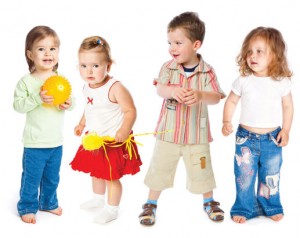 Cardio is not only for adults. With the growing childhood obesity problem, it’s important to get your older baby and toddler up and active. It’s easy to do, as young children are naturally motivated to move.
Cardio is not only for adults. With the growing childhood obesity problem, it’s important to get your older baby and toddler up and active. It’s easy to do, as young children are naturally motivated to move.
A child’s wonder years begin in toddlerhood, says Karen Ronney, a tennis pro, National Special Olympics coach, and mother of three children in San Diego.
“No longer helpless infants or babies, toddlers are ready, willing and able to begin playing activities and sports games that will build a strong foundation of health, coordination, balance, and fitness,” says Ronney, author of Proud Parents’ Guide to Raising Athletic, Balanced and Coordinated Kids (Thomas Nelson, 2008). “It’s never too early to show kids how to maintain healthy hearts, minds and bodies.”
Toddlers thrive on trying more advanced fine and gross motor challenges. They like activities that engage eye-hand and eye-foot coordination, strength, flexibility, speed, visual development, depth perception and spatial awareness, Ronney says.
It’s important to start early! Hayley Horn, owner of Kinetics Academy of Dance in Chico says, “The benefits of early exposure to movement, especially when combined with music, has been shown to affect the growing brain in profound ways, encouraging the developing brain to develop better language, math, emotional and social skills as well as improved physical development.”
Following are some simple guidelines to get your toddler moving:
Exercise for 30 minutes.
Children ages 2 and older should engage in at least 30 minutes of moderate intensity physical activity each day, says Dr. Rebecca Unger, a pediatrician in Chicago. “The good news is that this amount of physical activity can be additive over the course of the day,” she says.
For young children, the physical activity can include both lifestyle exercise, such as walking up stairs, walking to do errands, helping with gardening, and recreational activities, such as swimming, dancing and playing a toddler-friendly sport or game.
“When exercise is fun, kids will do it! A dance class that engages the whole imagination is a brilliant way to get a child moving,” says Horn.
Less structured activities count as well, including dancing to music in the house, running around the yard and playing at the playground. “Children can engage in the activities all at once or in several different stints, such as for 10 to 15 minutes at a time,” Unger says.
“There’s no need to worry about formal exercise sessions for your toddler,” says Dr. Susan Joy, director of Women’s Sports Health in Cleveland. “Toddlers generally like to be active, so allow them time to free play, walk and run around.”
Be a good role model.
To encourage physical activity, the most important moves parents can make for toddlers is to be active themselves. “Children of active parents are much more likely to be active,” Joy says. “Children of obese parents are much more likely than children of healthy weight parents to grow up to be obese.”
“Childhood overweight and obesity rates are dramatically increasing,” Joy says. “Being a good role model in terms of exercise, physical activity, and healthy eating is vitally important to your child’s future health. Exercise can even offer special time for you to spend with your child and allow you to bond with him or her doing things like walking and yoga.”
Limit screen time.
Along with role modeling active behavior, experts agree limiting television and computer time for toddlers is vital to maintaining an active lifestyle. This keeps sedentary behaviors from creeping into their daily routine.
“Encourage their natural tendency to be on-the-go by creating a safe, supervised environment and above all, stay active with them,” Dr. Joy says.
Complement your child’s schedule.
“When playing with young children timing is everything,” Ronney says. A well-rested and recently fed child is most receptive to learning and play. Keep more structured play sessions to 10 minutes or less.
“Kids love to play fun games that are in keeping with their short attention spans,” Ronney says. “Also, limit explanations of the game to about 10 words in 10 seconds. Better yet, talk while you demonstrate and get right to the business of child’s play.”
Be positive.
Ronney also suggests that during game play, use positive words of encouragement to compliment a child’s efforts. This will help a child develop a love of learning and fitness, and positive self-esteem.
Reap the advantages.
According to Dr. Unger, toddlers gain many of the same benefits that active adults do. These advantages include a healthy weight to height proportion, prevention of cardiovascular problems, and a reduced chance of diabetes and cancer in their later years.
“Children who start ahead by being fit toddlers, have a great chance to become fit teens and adults,” Ronney says. “The more children are exposed to fun, physical challenges in the first six years, the greater chance for brain and body development, which will lead to success in athletics, academics, music and artistic activities in the elementary, middle and high school years.”
[sws_blue_box box_size=”593″]Try out these easy, low-cost games to play with your toddler from Karen Ronney, tennis pro and mom to three young athletes.
Bottle Bowling
Collect up to 10 empty, 2-liter soda bottles. Fill with sand or water. Use a playground ball about 4 inches in diameter. Make sure the ball is small enough for your child to hold in one hand. Play a game of bowling by knocking down the pins.
Basketball Trash Pick Up
Take an empty household trashcan and paper to be scrunched into balls. Have the child aim to get the paper into the trash from varying distances.
Hallway Soccer
Place a laundry basket on its side at the end of a hallway. The opening faces your child to resemble a soccer goal. Have the child kick the inflatable ball into the basket at varying distances.
Bubble Tennis
Blow bubbles into the air and encourage your child to hit them with the fly swatter. Count the number of bubbles that make contact with the fly swatter.
Marshmallow Pops
Have a child sit at a table with a flat surface. The challenge is to pick up the marshmallows with the tweezers, one at a time, and place into the bowl using one hand. Have him return the marshmallows to the other bowl as well.
Beanbag Parade
Use several small beanbags about 4 inches in size. March in a parade in which your child balances beanbags on the head, shoulders, and arms to teach balance and coordination. Encourage him to keep a straight back and tall neck for better balancing.
Big Bunny Hops, Standing Long Jumps
Have your child pretend to be a bunny rabbit and leap forward in a very long jump. Begin in a balanced position with feet close together. Have them swing arms and then forward as they jump ahead. Measure the distance.
Dog Dancing
Pretend to be a dog and walk or dance on all fours to fun music. Make wacky moves with the torso, arms and legs while balancing on all fours.
Giraffe Steps, Long Lunges
Pretend to be a giraffe and walk with a tall neck and long lunging steps. Walk with a tall back, neck and head. Hold each giraffe step and lunge for about two seconds to strengthen muscles.
Heel and Toe-On the Line You Go
Have your child walk barefooted in a heel-toe motion along a chalked or taped line. Create a variety of patterns on the ground, such as a straight line, a T formation, zigzag, squares or triangles. When it becomes easy, have them try it with their eyes closed.[/sws_blue_box]
Posted in: Education, Health & Nutrition
Comment Policy: All viewpoints are welcome, but comments should remain relevant. Personal attacks, profanity, and aggressive behavior are not allowed. No spam, advertising, or promoting of products/services. Please, only use your real name and limit the amount of links submitted in your comment.
Comments
Leave a Reply
You Might Also Like...
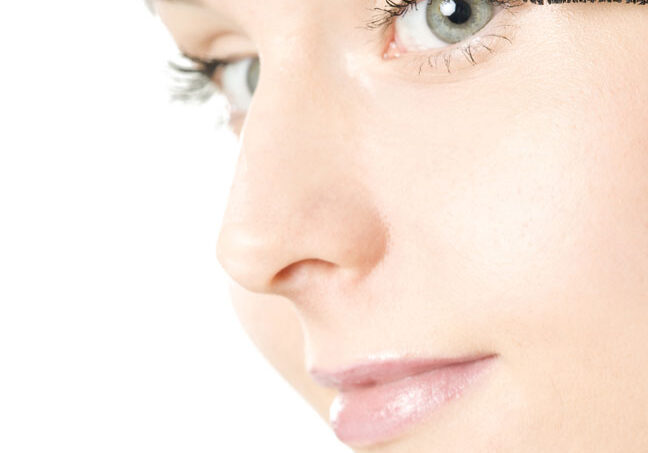
The Campaign for Safe Cosmetics – Empowering Consumers to Make Healthy Choices
Last March celebrity tabloids were abuzz when toddler Vivienne Jolie-Pitt was spotted wearing lipstick in public. Observers were decidedly focused on the appropriateness of the 3-year-old’s “dress up” demeanor. Noticeably […]

Gluten Free, Healthy, Delicious Desserts
As a gluten free chef, I am always on the lookout for desserts that fit into our lifestyles. While swiping through instagram a few months back, I found a company […]
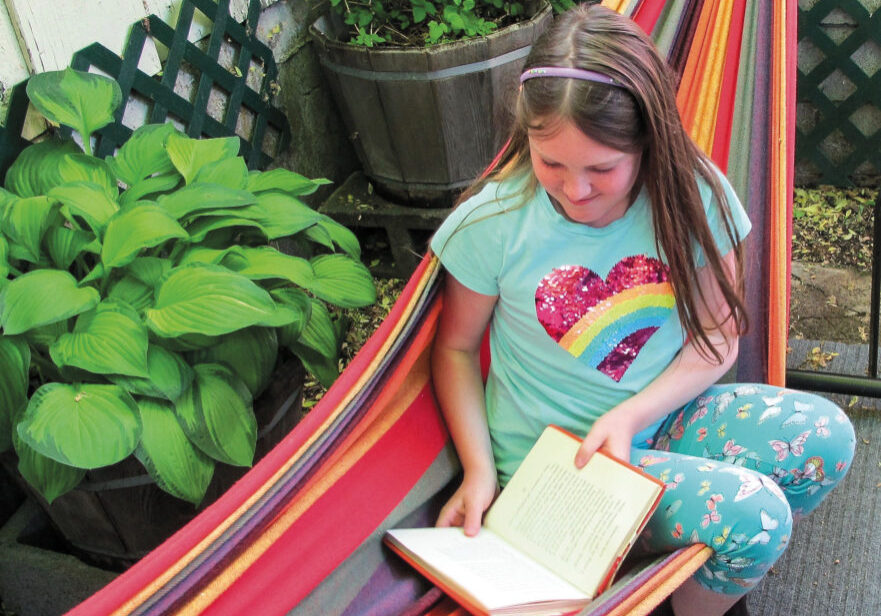
How To Create A Reading Culture In Your Home
The idea that you are what you read was eloquently described by Ralph Waldo Emerson: “I cannot remember the books I’ve read any more than the meals I have eaten; […]
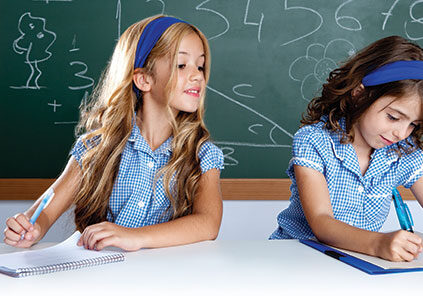
What to Do When Your Child Cheats
Think back to third grade. It’s spelling-test day, and the word is “money.” Would that be “m-o-n-i-e”? Maybe, if you just peeked a bit over your friend’s shoulder and took […]


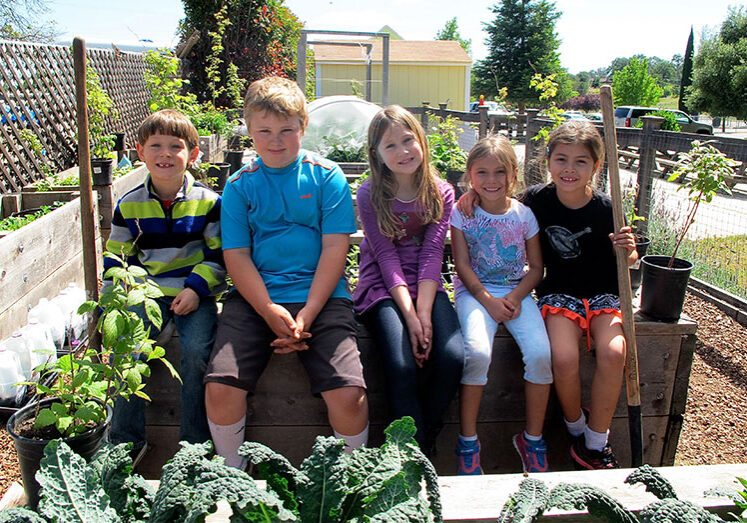
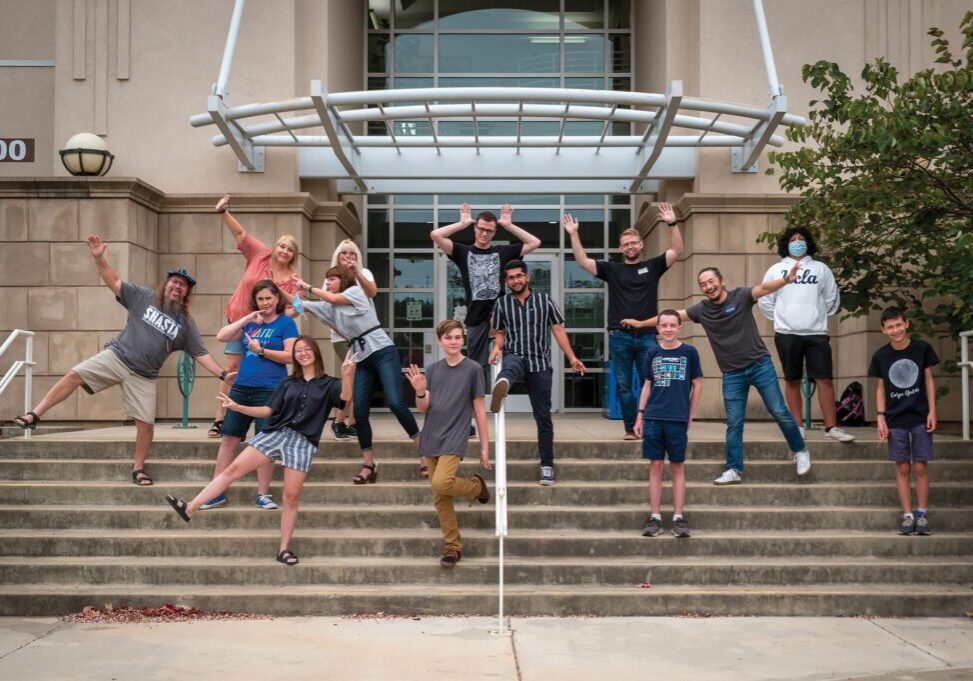
Tasha says
These are great idea’s. I’m always trying to think of fun activities that will engage my daughter and get her moving. Thanks for the ideas!